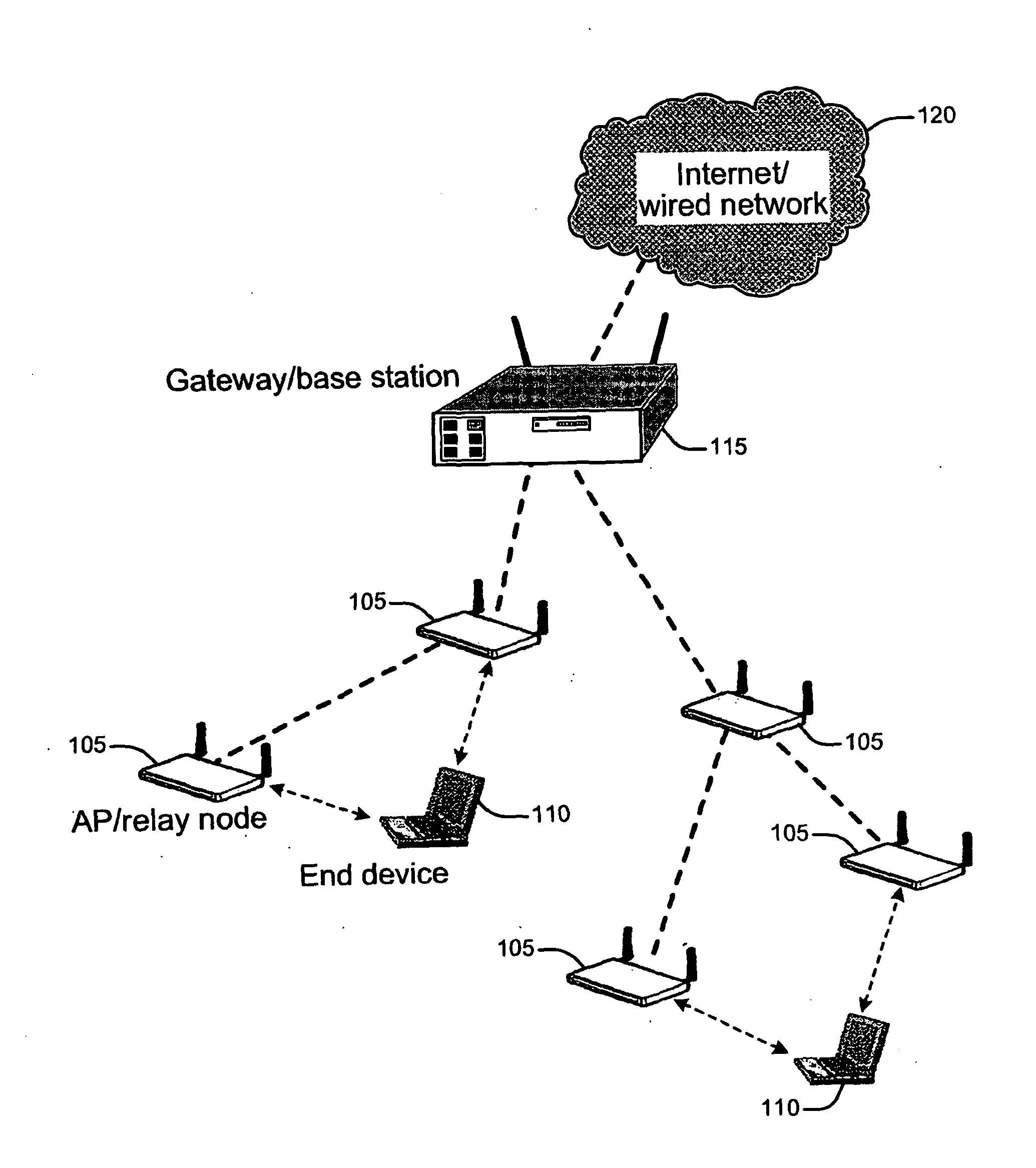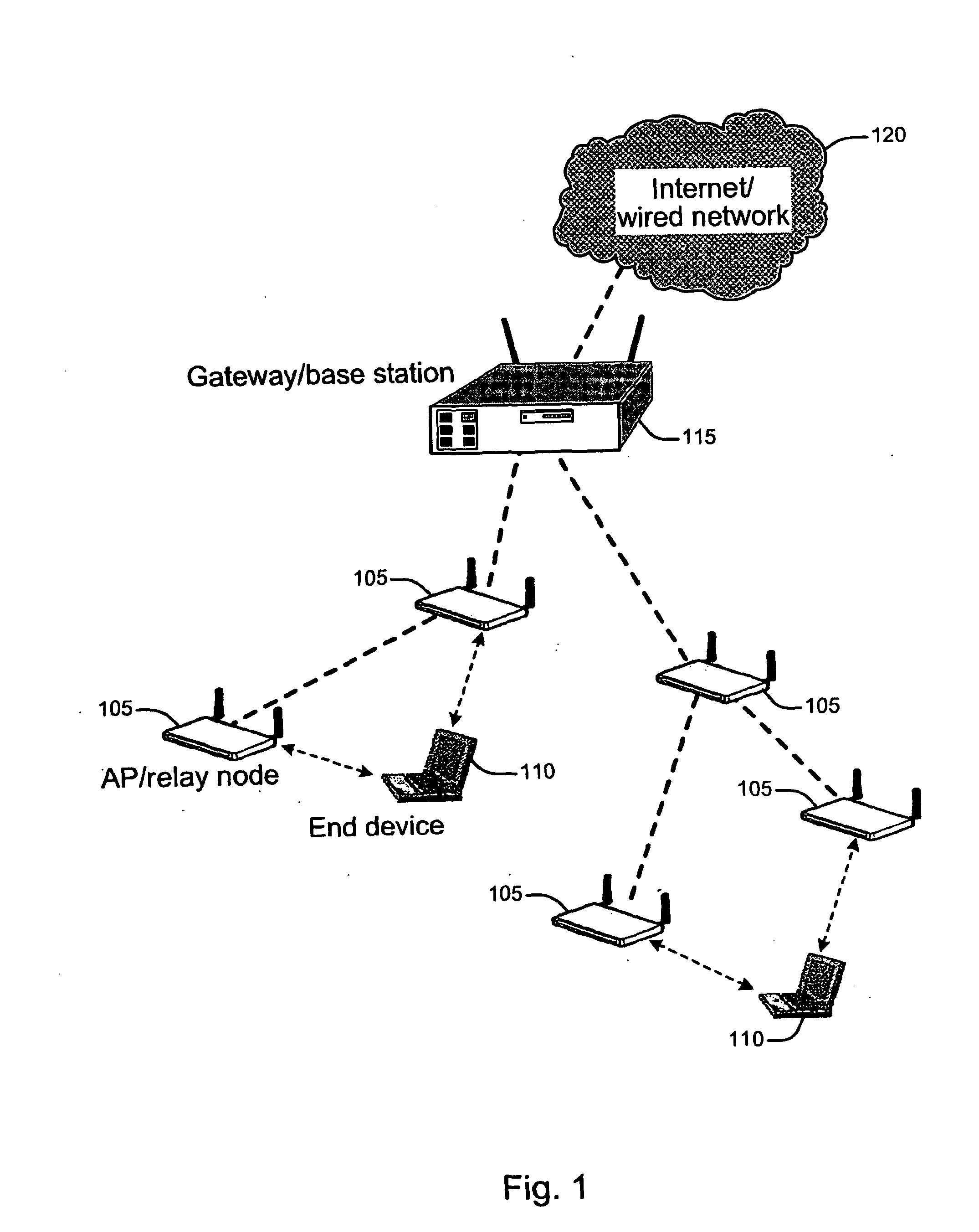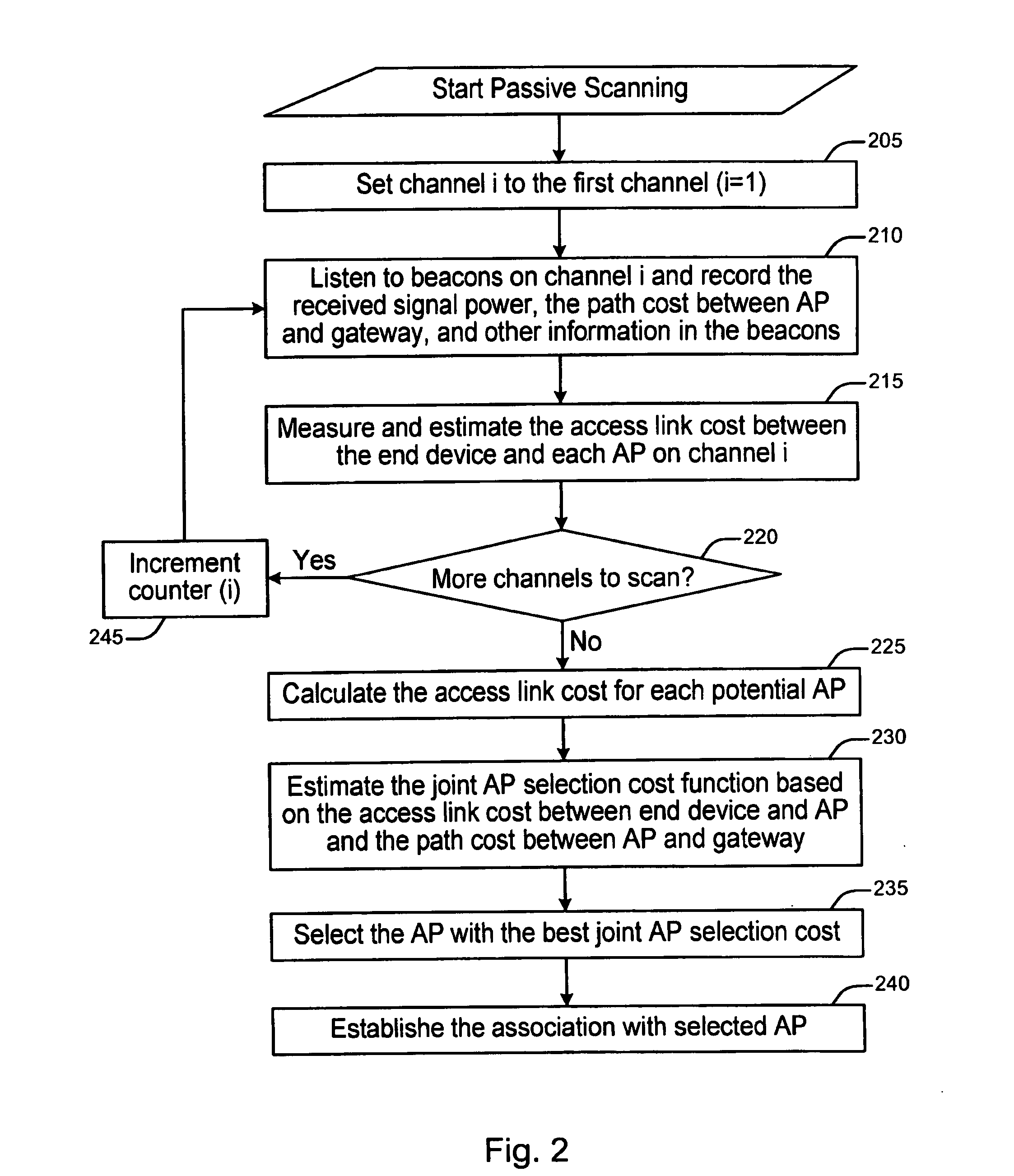[0006]The present invention relates to wireless networks and in particular to the selection of an access point or relay node in a multi-hop wireless network. APs / RNs are interconnected to form a backbone / infrastructure multi-hop wireless network. One or more APs / RNs are also connected to the wired infrastructure or the Internet acting as the GW / BS to access the Internet. The access point or relay node then selects the route / path for transmission of data to and from the Internet via a gateway or base station. End devices do not participate in packet relay and need associate with one AP / RN to gain the network access. An end device selects the access point or relay node based on both the path metric between the AP / RN and the GW / BS inside the wireless network and the access link quality between the end device and the access point or relay node. An end device can be a client node or a station or a host or a mobile node (or also generically called “node”) and further may be a computer, a laptop, a PDA or a cell phone communicating with the wireless network via an interworking function. An end device may be stationary or mobile.
[0007]The present invention is a method and apparatus for an end device to select an access point (AP) or relay node (RN) in multi-hop wireless networks. In single-hop wireless networks, such as is found in a hot spot, the APs or base stations (BSs) are connected to the wired backbone and the end devices are only one hop away from the wired backbone. In such single hop arrangements the wireless link is generally the bottleneck. In multi-hop wireless networks the communication quality of an end device is determined by both the access link between the end, device and the AP / RN as well as the wireless connection from the associated AP / RN to the gateway (GW) / BS. As used herein, “ / ” denotes alternative names for the same or similar components or structures. Considering both segments on the communication path jointly, the present invention describes an AP / RN selection method in a multi-hop wireless network. The end devices evaluate the access link quality based on the information delivered in the beacon frames and probe response frames as well as their own measurements and calculations. The end devices are also aware of the path quality between each potential AP / RN and the GW / BS from the enhanced AP beacon or probe response during the scanning process. Combining these two metrics, the end devices make AP selection decisions to improve the communication quality between themselves and the gateway. The AP of the present invention may be a mesh AP or a tree AP, where “mesh” and “tree” denote possible topologies. Mesh APs and tree APs are current topological structures for wireless networks. The present invention is not limited to either or any particular network topology.
[0008]Multi-hop wireless networks are emerging as a promising technology that has applications in defense, metro-area Internet access and transient networks. In the present invention, infrastructure multi-hop wireless networks are considered. Infrastructure multi-hop wireless networks consist of relay nodes and end devices. Relay nodes are part of the network infrastructure and are interconnected to form a backbone multi-hop wireless network. Relay nodes participate in routing and packet forwarding. Relay nodes may also act as access points (AP) for the end devices. The end devices associate with / connect to an AP or RN to obtain network access. The end devices (such as PDAs, laptops, computers, cell phones, etc.) do not participate in the packet relay. The end devices depend on the APs / RNs to forward their packets to the destination. One or more relay nodes are also connected to the wired infrastructure or the Internet via one or more gateways to access the Internet.
[0009]Supporting communication between end devices and gateways in infrastructure multi-hop wireless networks requires the association / connection of end devices with / to a nearby AP. The AP / RN uses touting protocols in the backbone along with a routing metric to determine which route, among all possible routes, will be used for packet relay. The performance experienced by end devices depends heavily on both access link between the end device and the AP / RN as well as the wireless connection from the associated AP / RN to the gateway (GW) / BS. The former determines the quality of the access link, i.e., the edge / path between wireless backbone and end devices, while the latter determines the quality in the interior backbone infrastructure.
[0010]A method and apparatus are described for selecting an access point in a multi-hop wireless network, including calculating an access link cost for each candidate access point, receiving a path cost between each candidate access point and a gateway, estimating a joint access point selection cost function using the access link cost and the path cost, and selecting one of the candidate access points based on the joint access point selection cost function. The method and apparatus further establish a connection with the selected access point. The method and apparatus receive beacons and messages responsive to probe request messages containing received signal power and other information in order to measure and estimate an access link quality between an end device and an access point. Also described are a method and apparatus for maintaining a connection with an access point, monitoring a cost of the access point, monitoring costs of candidate access points, comparing a cost of the access point to a first predetermined threshold, comparing a difference between the cost of the access point and a cost of one of the candidate access points to a second predetermined threshold, if a result of the first comparison is below the first predetermined threshold, determining if the connection has continued for a predetermined period of time, if a result of the second comparison is greater than the second predetermined threshold, disconnecting from the access point and connecting to one of the candidate access points, if a result of the determination is positive.
 Login to View More
Login to View More  Login to View More
Login to View More 


